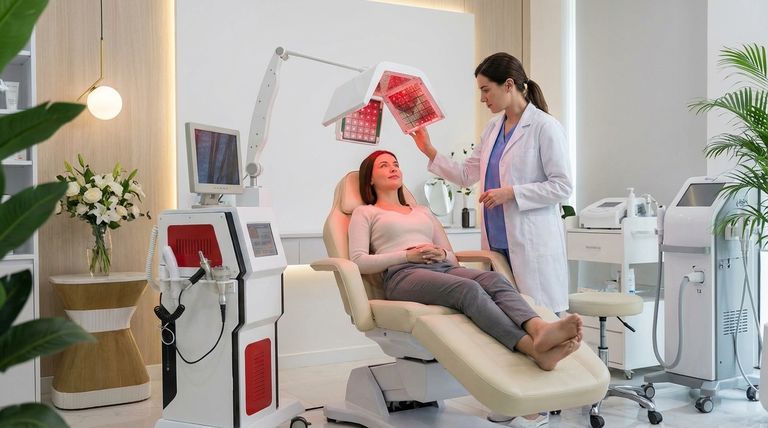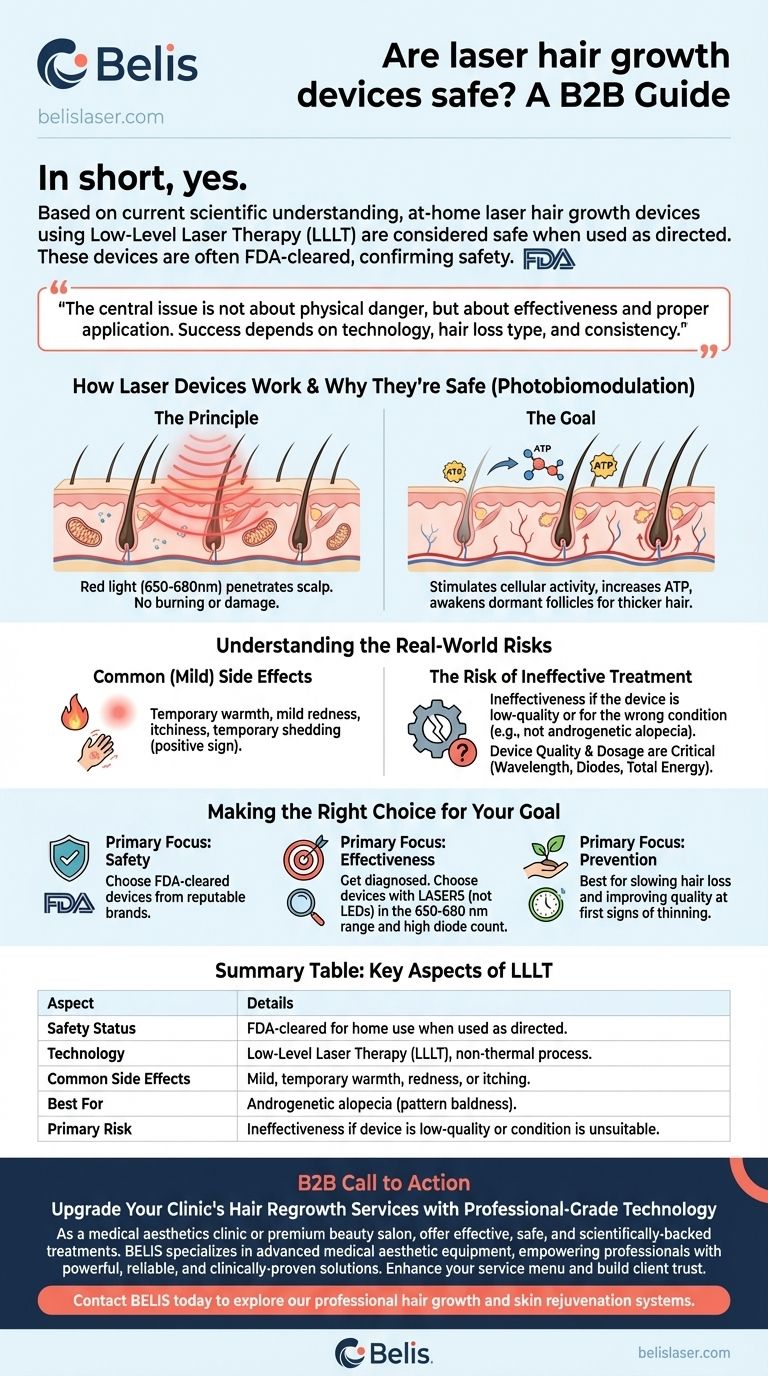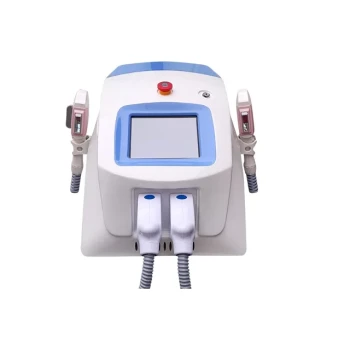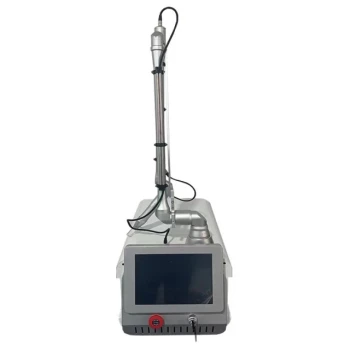In short, yes. Based on current scientific understanding, at-home laser hair growth devices that use Low-Level Laser Therapy (LLLT) are considered safe for both men and women. These devices have been reviewed and cleared by regulatory bodies like the FDA, primarily as a confirmation of their safety when used according to the manufacturer's instructions.
The central issue is not about physical danger, but about effectiveness and proper application. While LLLT is fundamentally safe, its success depends on the specific device technology, the nature of your hair loss, and consistent use.

How Laser Devices Work (And Why They're Safe)
To understand the safety of these devices, you must first understand the mechanism. They don't burn, cut, or ablate tissue like surgical or cosmetic lasers. Instead, they use low-energy light to stimulate cellular activity.
The Principle: Photobiomodulation
This technology is formally known as photobiomodulation, or Low-Level Laser Therapy (LLLT). It uses specific wavelengths of red light that penetrate the scalp to a shallow depth.
The light energy is absorbed by the mitochondria—the powerhouses—within the cells of your hair follicles. This process is non-thermal and does not damage the skin or the follicle itself.
The Goal: Awakening Dormant Follicles
This energy absorption triggers a chain reaction. It helps increase the production of adenosine triphosphate (ATP), the primary energy currency of the cell.
This boost in cellular energy can help "awaken" hair follicles from a dormant (telogen) phase and push them into an active growth (anagen) phase. It also improves blood flow, delivering more oxygen and nutrients to the follicle root. The result is not new follicles, but the potential for existing ones to produce thicker, stronger hair.
Understanding the Real-World Risks
While the technology is inherently safe, it's important to be aware of the practical considerations and potential side effects, which are almost always minor and temporary.
Common (But Mild) Side Effects
The most frequently reported side effects are minor and tend to resolve quickly. These can include a mild sensation of warmth, slight scalp redness, or itchiness immediately following a treatment session.
Some users also report a temporary increase in shedding when they first begin treatment. This is often seen as a positive sign, as it indicates that follicles are pushing out older, weaker hairs to make way for new, healthier growth.
The Risk of Ineffective Treatment
The biggest "risk" associated with LLLT is not physical harm, but the possibility that it will not work for your specific condition.
LLLT is most studied and effective for androgenetic alopecia (common pattern baldness). It is generally not an effective treatment for hair loss caused by chemotherapy, autoimmune disorders like alopecia areata, or scarring.
Device Quality and "Dosage"
The reference to "optimum dosimetric parameters" is critical. This means the effectiveness of a device depends on its technical specifications—the wavelength of light, the number of laser diodes, and the total energy delivered.
A cheap device with only a few LEDs (not lasers) may be perfectly safe, but it will likely be completely ineffective because it fails to deliver the necessary energy dose to the follicles. This is why choosing a device from a reputable manufacturer is crucial.
Making the Right Choice for Your Goal
Before investing, your goal should be to match the technology to your specific hair loss condition and expectations.
-
If your primary focus is safety: Choose a device with clear FDA clearance from a reputable brand. This is your best assurance that the device has been reviewed and found to be substantially equivalent to other safe devices on the market.
-
If your primary focus is effectiveness: First, get a diagnosis from a dermatologist to confirm you have androgenetic alopecia. Then, look for devices that clearly state they use lasers (not just LEDs) with a wavelength in the 650-680 nm range and feature a high number of diodes for better scalp coverage.
-
If your primary focus is preventing hair loss: LLLT is often more effective at slowing the progression of hair loss and improving the quality of existing hair than it is at regrowing hair in completely bald areas. It is best used at the first signs of thinning.
By understanding how the technology works and its inherent limitations, you can confidently decide if a laser hair growth device is a safe and logical part of your hair wellness strategy.
Summary Table:
| Key Aspect | Details |
|---|---|
| Safety Status | FDA-cleared for home use when used as directed. |
| Technology | Low-Level Laser Therapy (LLLT), a non-thermal process. |
| Common Side Effects | Mild, temporary warmth, redness, or itching. |
| Best For | Androgenetic alopecia (pattern baldness). |
| Primary Risk | Ineffectiveness if device is low-quality or condition is unsuitable. |
Upgrade Your Clinic's Hair Regrowth Services with Professional-Grade Technology
As a medical aesthetics clinic or premium beauty salon, offering effective, safe, and scientifically-backed treatments is key to client retention and growth. At-home LLLT devices can be a great recommendation, but your clients seek the superior results only professional equipment can deliver.
BELIS specializes in advanced medical aesthetic equipment, empowering professionals like you with powerful, reliable, and clinically-proven solutions. Enhance your service menu and build client trust with technology that makes a visible difference.
Contact BELIS today to explore our range of professional hair growth and skin rejuvenation systems tailored for your business success.
Visual Guide

Related Products
- Multifunctional Laser Hair Growth Machine Device for Hair Growth
- Multifunctional Laser Hair Growth Machine Device for Hair Growth
- Diode Laser SHR Trilaser Hair Removal Machine for Clinic Use
- Clinic Diode Laser Hair Removal Machine with SHR and Trilaser Technology
- Trilaser Diode Hair Removal Machine for Beauty Clinic Use
People Also Ask
- How often should you do laser hair regrowth? A Guide to the Two-Phase Treatment Schedule
- Are IPL machines safe? Understanding Skin Tone Compatibility for Safe At-Home Use
- Does IPL have risks? How to Ensure a Safe and Effective Treatment
- How often should I use red light therapy on my head? Find Your Optimal Treatment Schedule
- Do laser caps really regrow hair? A Science-Backed Guide to Effective Hair Regrowth



















